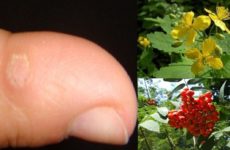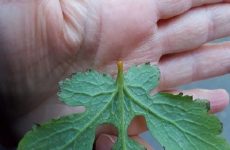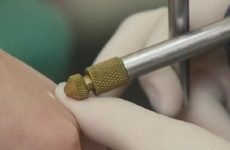Various unpleasant neoplasms on the skin can cause a lot of inconvenience: they interfere with normal life, become complexes, so the ability to remove them with liquid nitrogen (cryotherapy) seems truly wonderful.
However, reviews about getting rid of warts are mixed. Of course, this is a proven and quite effective method of treatment that will help you quickly get rid of an ugly formation , but you also risk getting burned.
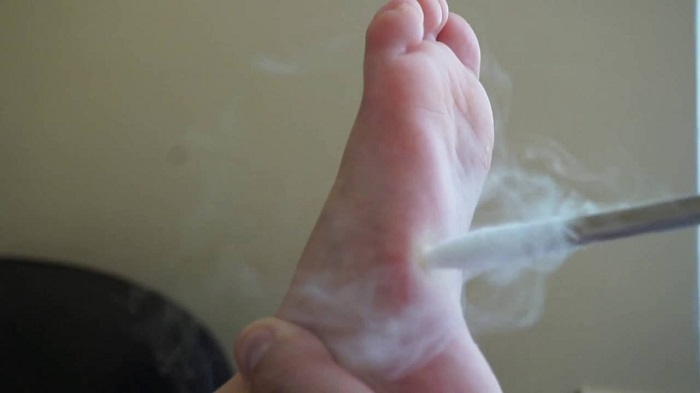
Содержание:
- 1 Introduction
- 2 What growths can be removed by this method?
- 3 Indications and contraindications for the procedure
- 4 Is the procedure painful?
- 5 How to prepare for cryodestruction?
- 6 How does burning take place?
- 7 When is a repeat procedure required?
- 8 Possible complications and consequences after cauterization
- 9 Cauterization during pregnancy – is it possible or not?
- 10 The cost of the procedure
- 11 Conclusion
Introduction
To begin with, let’s figure out what a wart is, because most of humanity perceives it as a cosmetic skin problem, and not as a disease, so rarely does anyone go to the doctor right away when it is still quite easy to cure it.
Warts are a viral disease, and self-medication is indispensable. It makes no sense to cut them off with scissors, smear them with skin creams, bandage them with horsehair – this will only aggravate the situation, moreover, damaged warts will cause even more discomfort to their owner.
They will begin to grow faster, bleed, crust and hurt. It is better to immediately go to the doctor, then the wart will not cause unnecessary problems.
What growths can be removed by this method?
Almost any warts can be removed by this method, but it will be much better if the doctor himself consults you before carrying out this procedure, since there are still some contraindications, which are discussed below.
It is worth remembering again that the appearance of warts is a consequence of a viral disease associated with a weakened immune system and a deterioration in general health, so it is worth taking tests before the procedure to find the root of the problem.
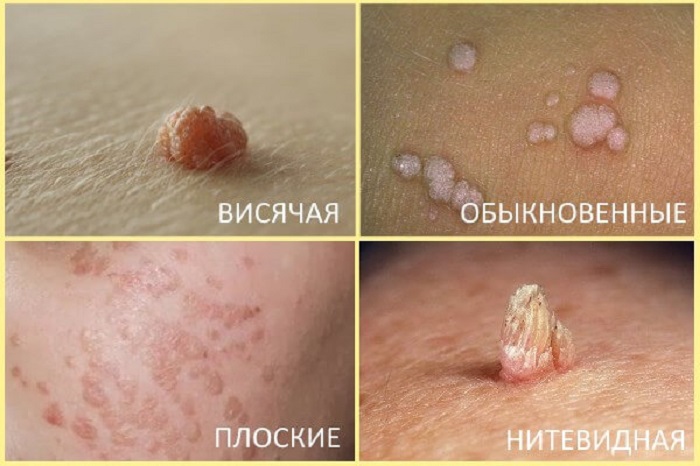
Best of all, cryotherapy or cryodestruction is suitable for warts formed due to infection entering the body through a wound or scratch.
They usually appear on the back of the hands and fingers. It is also well suited for the so-called juvenile papillomas, which are very small in size and appear mainly on the face and limbs.
Indications and contraindications for the procedure
This method of treatment is prescribed if the formations that appear increase in size, cause significant discomfort, are located on the genitals, are disturbed in the structure: they crack or break.
All this is an indication for an urgent disposal of education. Some varieties of papilloma can be fatal if they are not cauterized in time .
There are also contraindications to cryotherapy. For example, the presence of inflammation or infection in the body, a tendency to epilepsy, high blood pressure or temperature, discoloration of the wart, and poor cold tolerance.
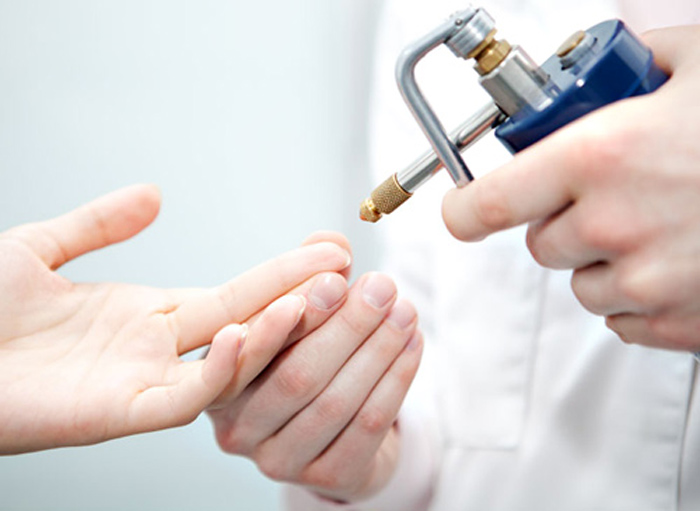
In addition to all this, pregnancy, breastfeeding and the personal characteristics of each person should be taken into account.
Is the procedure painful?
Removing a wart with cryotherapy is almost painless, so no anesthesia injections are required, but if you are afraid, you can ask your doctor to treat the wart with an anesthetic ointment before the procedure to feel calmer.
How to prepare for cryodestruction?
Be prepared for possible tingling during the procedure if you have more than one wart. Special preparation, except moral, is practically not needed. The time for the removal of a wart takes just a few seconds.
If the skin is very sensitive, the removal is performed on a child or the wart is large, novocaine or lidocaine is injected before the procedure to completely eliminate all discomfort, but it is necessary to check for an anesthetic allergy beforehand so as not to harm your health.
In some cases, it is allowed to take painkillers an hour before the procedure. If you’re having an allergic reaction, it’s best to just endure a moment of discomfort.
After the injection, the anesthetic must wait about 10-15 minutes, otherwise it will not have time to dissolve in the tissues and cause a burn of healthy skin.
How does burning take place?
Let us consider in more detail how the process of burning warts with liquid nitrogen takes place.
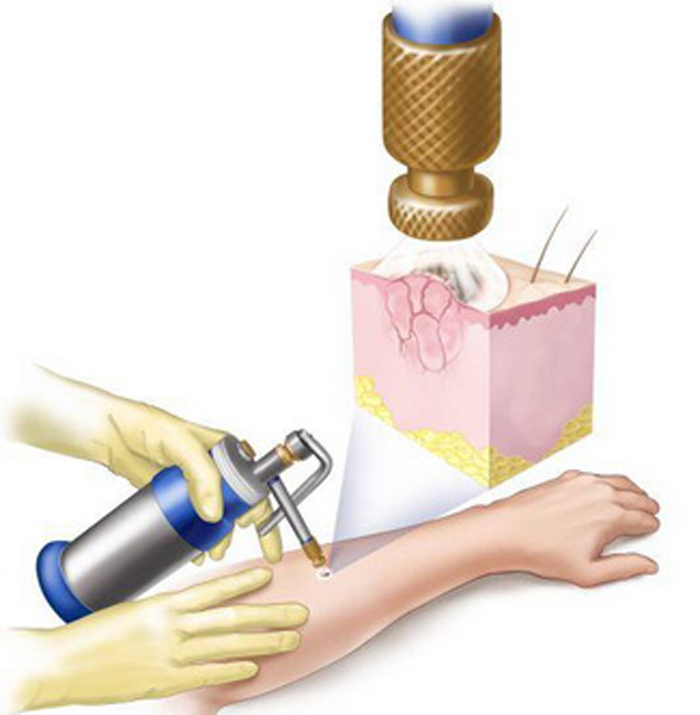
Operation technique
There are two types of wart removal with liquid nitrogen – manual and hardware. The hardware takes place with the help of a cryoprobe – a special apparatus that supplies nitrogen through a nozzle.
First, the site of the procedure is cleaned with an antibacterial agent to prevent infection. Next, a gel is applied that softens the skin so that nitrogen penetrates deeper into the tissues.
Based on the size of the wart, a nozzle is selected – an applicator of the desired diameter, then it is applied to the formation, only slightly affecting good skin, no more than one millimeter. When you press the applicator, a nitrogen liquid is released, which freezes the wart.
After the procedure, you can see how the wart has changed its color to light and when touched, you can feel a hard lump. The place of the procedure is treated with special substances that promote healing.
Most often, this method is used to remove plantar growth. In this case, this method is very unpleasant and painful, since the root of the wart is deep inside, but thanks to the doctor’s ability to control the depth of nitrogen injection, it is more difficult to make a mistake in this difficult situation.
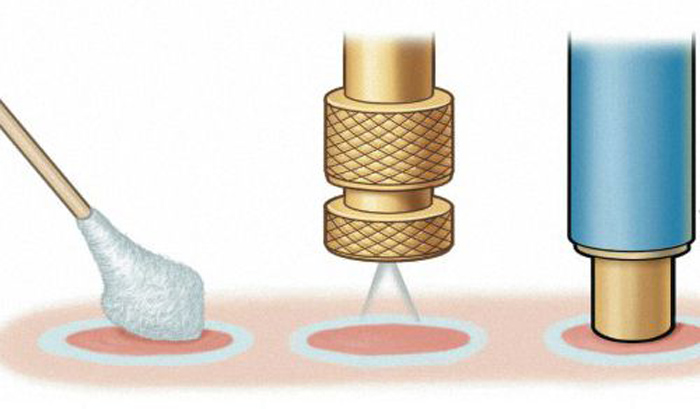
The manual method gives less guarantees and is used mainly on “juvenile warts”. A special wooden stick with cotton at the end is dipped in liquid nitrogen, applied to the wart and lightly pressed. This takes ten to thirty seconds.
After cauterization, the skin becomes white, and after a few minutes the doctor says whether to repeat or not. Very big disadvantages are the possibility of getting the solution on the whole skin, and the inability to control the depth. After the procedure, the place is again treated with a solution that kills microbes.
Features of the removal of different types of formations
Plantar warts are the most difficult type of papilloma to treat, since the place of its appearance is constantly in contact and rubs with the tissue. Due to constant walking, the growth is pressed into the skin tissues, grows in depth and width.
Freezing such a wart takes a little longer and takes place in several stages, about a minute long. Since it is very painful, anesthesia is almost always used before starting.
Warts that form on the mucous membrane of the genital organs, in almost half of the cases that caused a sexually transmitted infection, are also removed extremely painfully, since the skin in this place is very sensitive and an anesthetic is needed.
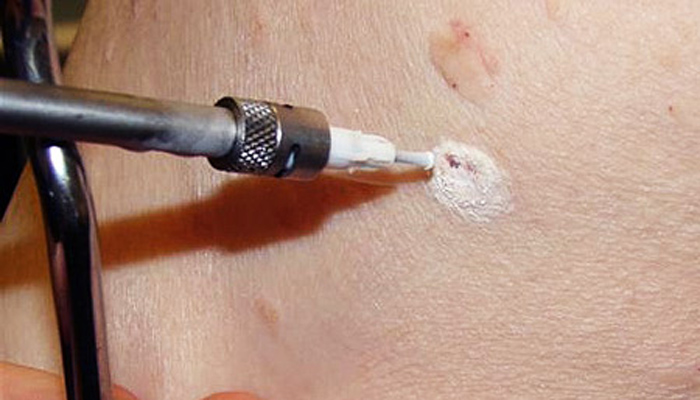
To remove them, the applicator is placed perpendicular to the wart. It does not even take ten seconds and usually one session is enough. Simple warts on the fingers and hands are removed in the same way.
Flat, otherwise called “youthful”, warts are the safest among all types of papilloma and are removed by circular movements of the applicator over the surface.
Stages of growth evolution after cryodestruction
Warts after the procedure change their structure in several stages. During exposure to nitrogen, the vessels within the formation shrink, and it becomes much smaller and paler.
After a few minutes, redness appears around the wart – this is a normal process of inflammation that disappears within a few hours. Sometimes it even takes less than an hour.
Over the next day, a bubble forms, which cannot be pressed, since the virus is located there. Two weeks later, a hard crust forms, and the growth is rejected. In rare cases, it takes about two months. Completely the skin is restored only after six months.
When is a repeat procedure required?
If, by mistake of the doctor, the papilloma was not completely removed, most likely, the dermatologist’s office will have to be visited again.
Also, if the bladder formed after cryodestruction was torn or damaged, an infection can penetrate into it, and the wart will appear again. To avoid this, it is necessary to strictly follow the advice given by the doctor and choose a qualified specialist for the procedure.
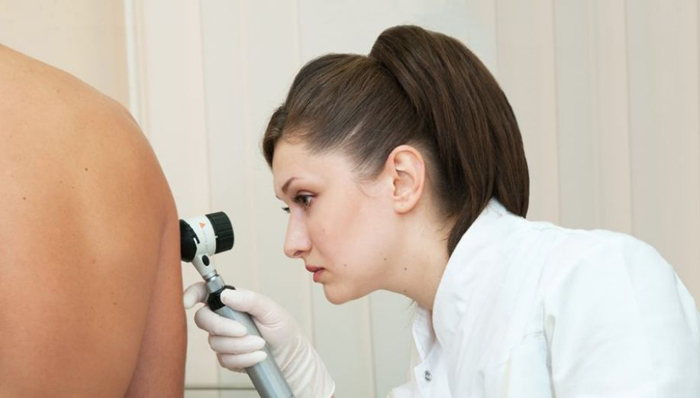
Possible complications and consequences after cauterization
If the rules of hygiene and wound care are violated after the procedure, for example, piercing the bladder or peeling off the crust, it can lead to infection, a scar or scar at the site of a healed wart, and re-formation.
Cauterization during pregnancy – is it possible or not?
If a pregnant woman notices warts on her body, she should not panic and worry about her child in vain, since this virus is not capable of harming the fetus or in some way negatively affecting it. Warts are unpleasant and ugly – this is true, however, they do not cause serious harm to health.
Of course, if the warts are on the genitals, then the child can become infected with them at birth and this is no longer a good prospect.
Dermatologists and gynecologists recommend that pregnant women postpone the removal of harmless warts until after childbirth, but if we are talking about those located on the genitals and in the birth canal, then special treatment is expected.
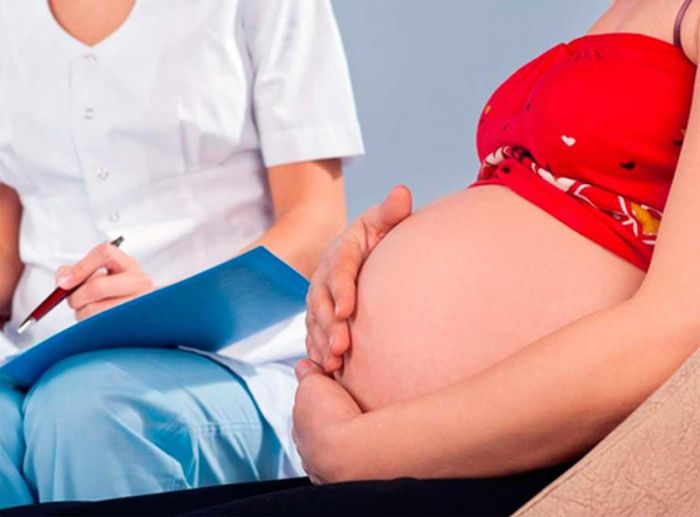
Such a formation requires a biopsy to determine whether it is possible to degenerate a benign tumor into a malignant one.
In any case, it is strictly forbidden to self-medicate and use ” proven folk remedies “. Just consult a doctor.
The cost of the procedure
In different clinics and depending on the complexity of the operation, the cost of removing a wart with liquid nitrogen varies from one hundred and fifty to a thousand rubles.
Conclusion
The method of removing warts for each person is prescribed individually, and cryodestruction is not the best choice for all people – your doctor should tell you this. And remember that warts are not a skin disease, but a virus that must first be treated from the inside.


